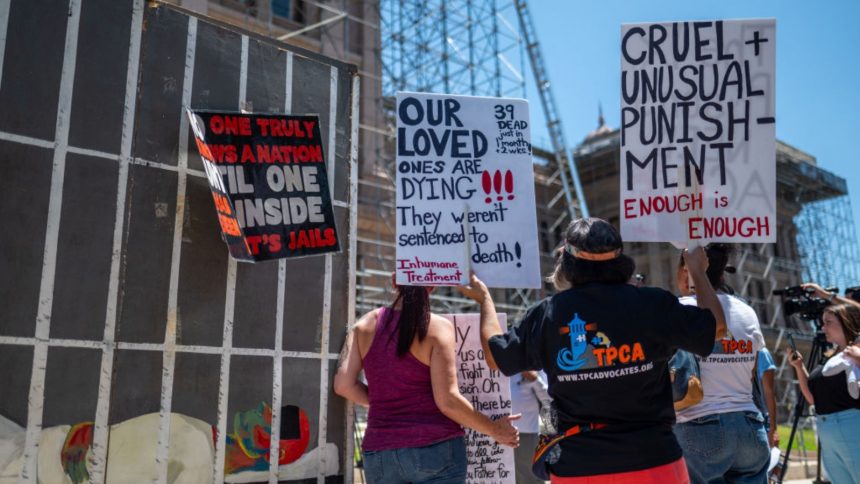Since she began studying mechanical engineering as an undergraduate at Stanford University, Ufuoma Ovienmhada had little desire to build “tech for tech’s sake.” The university’s sustainability lab offered one route to the applied side of engineering that appealed to her. One summer, she worked with the lab’s researchers on a project in Ivory Coast, in West Africa, where she considered how engineering could be employed for sustainable development. Undergirding Ovienmhada’s academic work was a burgeoning political consciousness shaped by the police murders of unarmed Black people. In her recollection, her college tenure, between 2014 and 2018, was “the Black Lives Matter era of police violence being broadcast on social media every other week.” She regularly attended protests and participated in Black campus organizations where she and her peers frequently discussed police brutality. While researching policing protocols at Stanford, Ovienmhada remembers being told by a campus officer that someone walking down the street in a hoodie would automatically be considered suspicious. “You’re telling me that racism is embedded in how you operate,” she remembers thinking.
Ovienmhada went on to enroll in a master’s program at the MIT Media Lab, where she studied the use of satellite imagery analysis to manage invasive species in the Republic of Benin. She was in school during yet another period of time punctuated by police murders — this time of Breonna Taylor and George Floyd. The unprecedented nationwide protests against police brutality in the summer of 2020 encouraged Ovienmhada to pivot from international development work to the domestic issues of policing and mass incarceration. She wanted to figure out how she could apply her skills as an engineer and programmer to address the problems that concerned her most deeply. As young people across the country took to the streets to demand an end to racist and violent policing, Ovienmhada learned about the nascent field of prison ecology, which focuses on the environmental hazards within and around carceral facilities — prisons, jails, and immigrant detention centers — and how they affect incarcerated people and surrounding communities.
At the time, academic writings in prison ecology were limited to a handful of journal articles in the social sciences. It seemed to her that few were considering how to apply quantitative methods to uncover the environmental issues affecting incarcerated populations. There was a gap in the data, and she felt called to help fill it. A mock prison cell, intended to simulate the heat inside Texas prisons, sits outside the Texas State Capitol building in Austin, Texas, in July, 2023.SERGIO FLORES/AFP via Getty Images Though the world of academia was only beginning to wake up to the study of prison ecology, organizers working against mass incarceration had already spent years drawing connections between environmental justice issues and the conditions in prisons. Members of the national grassroots organization Fight Toxic Prisons (FTP), which uses advocacy and direct action to challenge the prison system, were well aware of not only the litany of environmental hazards that incarcerated people in the U.S. face, but also the value of quantitative research and, in particular, geospatial analysis in shaping the work of the decarceration movement. “There is so much about this issue that is very geographical,” said Mei Azaad, an organizer with the Fight Toxic Prisons, adding that so many of the environmental hazards in prisons come from their proximity to oil and gas infrastructure or to Superfund sites. The lack of data to inform them where specific environmental hazards were concentrated was “something we kept running up against,” she said. By 2020, FTP had been doing disaster response work for a few years, and they knew how useful it would be to have a flood risk map overlaid on top of a map of U.S. carceral facilities, something they could refer to when determining how to prioritize their advocacy efforts.
Meanwhile, in the course of her own research, Ovienmhada realized that she could apply her knowledge of remote sensing, which enables practitioners to map a range of environmental indicators such as flood risk, air quality, and heat exposure to wide geographic areas, to contribute better applications of geospatial analysis. From her apartment in Cambridge, Massachusetts, Ovienmhada had been keeping up with FTP’s work. On social media, they often posted data and mapping-oriented information about prisons. She was initially hesitant to reach out to the group and offer her help — aware of the hesitation that community organizers often have toward academics. But, coincidentally, a friend who worked on FTP’s disaster response team heard about Ovienmhada’s satellite imagery-based approach to studying prison ecology, and offered to make the connection.
Ovienmhada joined FTP’s rapid response team in 2022, coinciding with the Category 4 Hurricane Ian that struck central Florida. As the storm approached the Florida coast, she made a map showing that several of the state’s carceral facilities were in mandatory evacuation zones, but were not being evacuated. After a phone banking campaign in which they informed Tampa’s Hillsborough County Jail of the map they’d made, the facility decided to evacuate its incarcerated residents. “We can’t say that they did this because of FTP but it was cool to see this kind of map used to mobilize,” Ovienmhada said.
Over the past several years, a growing body of academic work has established that prisons expose incarcerated people to a long list of severe environmental hazards. A 2022 report from the American Journal of Public Health found that nearly half of the country’s prisons rely on water from sources contaminated with “forever chemicals,” toxic compounds that do not break down easily in the body and have been linked to serious health effects like cancer and kidney disease. Earlier this year, a group of researchers examined heat exposure for all 4,078 operational carceral facilities in the continental U.S. between the years 1982-2020, and found that prison populations are highly vulnerable to extreme heat exposure, a problem that is only increasing with the climate crisis.
Though these kinds of research projects offer valuable insights into environmental conditions afflicting prisoners, Ovienmhada said, they do not often respond to the needs of groups like FTP that want to use satellite data to take immediate action against specific prisons and, ultimately, to advance decarceration. Ovienmhada found that she enjoyed using the skills she’d developed to aid FTP’s organizing work. But the technical abilities to design maps and build models weren’t the only hurdles that the practical applications of prison ecology had to overcome. The programs and server space to build the maps can cost thousands. They needed money, which is often more readily available to research a problem than to do something about it.
Ovienmhada’s connection with FTP coincided with the Biden Administration’s big push for environmental justice, a span of several years that saw the formation of White House advisory committees on the issue and the dispersal of millions of federal dollars to research projects illuminating the disproportionate impacts of environmental stressors on communities of color across the country. For the first time, federal agencies were under a federal directive to support environmental justice initiatives. In April 2023, President Biden passed Executive order 14096, which directs the federal government to strengthen its commitment to environmental justice by funding scientific research and data collection initiatives, in addition to engaging with local communities.
Ovienmhada was just starting her PhD in aerospace engineering when she noticed that NASA had published a solicitation for proposals from academics to use the agency’s satellite imagery to study environmental injustices. The highest tier of funding — $250,000 — was to be awarded to projects that developed a geospatial tool for integrating satellite data and other socioeconomic information around an environmental justice issue. It was the opportunity Ovienmhada and FTP had been waiting for. They quickly put together an application, in which they proposed a different approach to data gathering. Rather than just visualizing environmental-hazard data on top of a map of U.S. carceral facilities, they wanted to incorporate the voices of people held in those same facilities. This qualitative approach, they reasoned, would fill in gaps in their knowledge, illuminating problems that couldn’t be picked up by an infrared camera hovering in space.
Several months later, their proposal was accepted, and they began working on developing their innovative approach to utilizing geospatial analysis in the fight against environmental injustices faced by incarcerated populations.






